Uncover the species likely to be found in your bee hotel from local entomologist, Louise Hislop.
The residents of your bee hotel or bee log will be diverse if you provide a wide range of hole sizes, from 1-10mm diameter. None of the species that choose to nest here will be social species, they are not aggressive and can be observed safely. These species are called solitary, meaning that each female sets up and provisions her own nest.
Nest tunnels will be filled from the back forwards. First, a store of food for the developing young will be added, followed by laying a single egg, then the cell is sealed. This is repeated until the available space is filled. Many species leave a sealed but empty ‘vestibule’ to deter predators. The first cells completed will contain more stores and female eggs, while the later ones contain males, who then emerge first the following year. If the tubes or holes are short, only male eggs are laid, unbalancing the population, so ideally they should be around 15cm long.
The inhabitants can be divided into three main groups: solitary bees, solitary wasps and cuckoos. All these species can live alongside each other, but each has its own niche in terms of feeding, provisioning strategies and nest preferences.
Bees
These are aerial nesters, as opposed to ground-nesting species such as Mining Bees. Females generally carry pollen on scopal hairs on the underside of their abdomen, rather than on scopa on their hind legs, as is usual in the ground nesters.
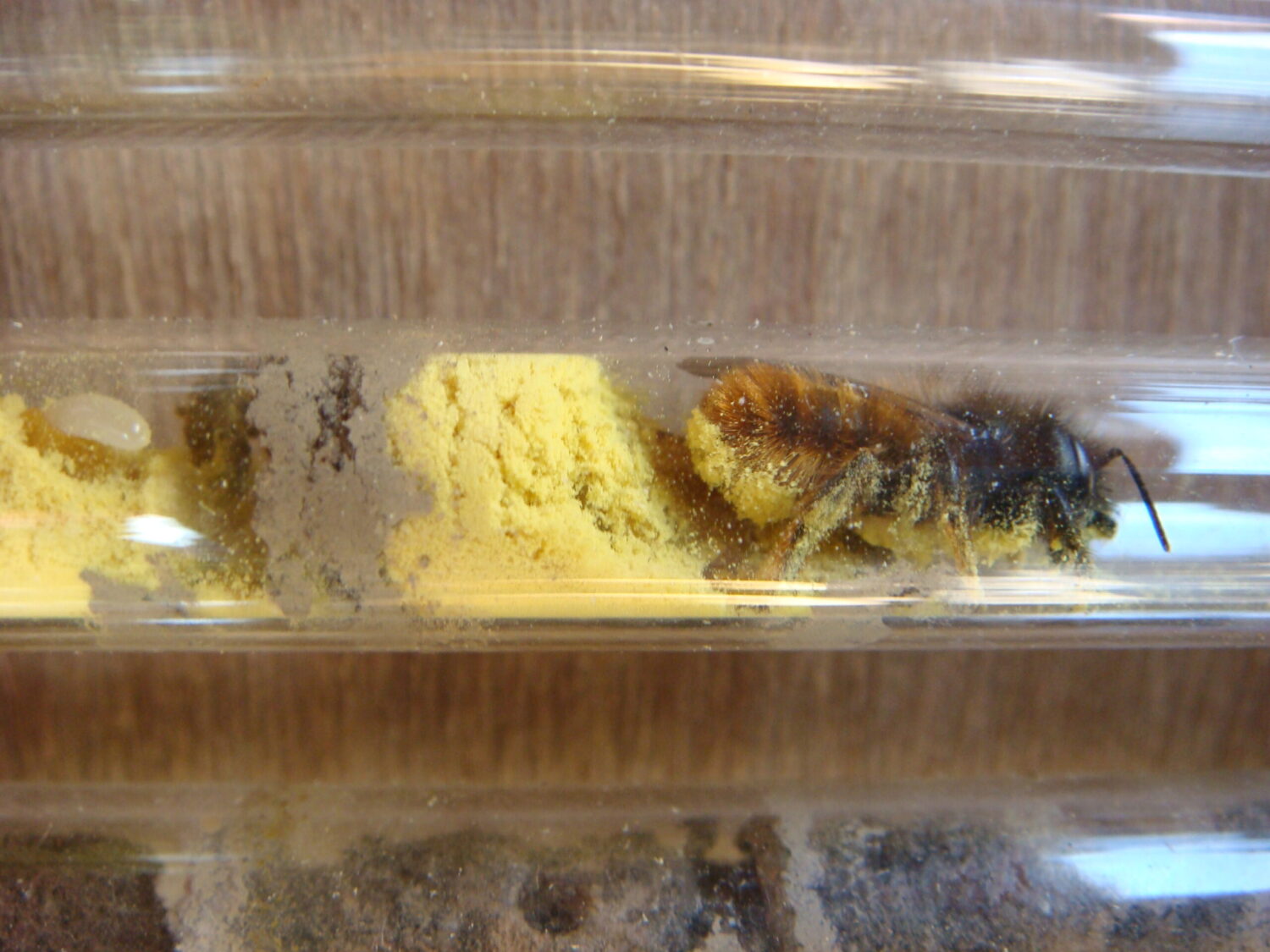
Red Mason Bee Osmia bicornis
Red Mason Bees are often the first to take advantage of bee hotels. They have orange-red haired abdomen with a lighter brown-haired thorax. The females are larger, while the males have a distinguishing pale ‘moustache’ of hairs on the face. Between April and June females collect nectar and pollen to stock each cell before sealing with mud collected from a nearby ‘mine’.
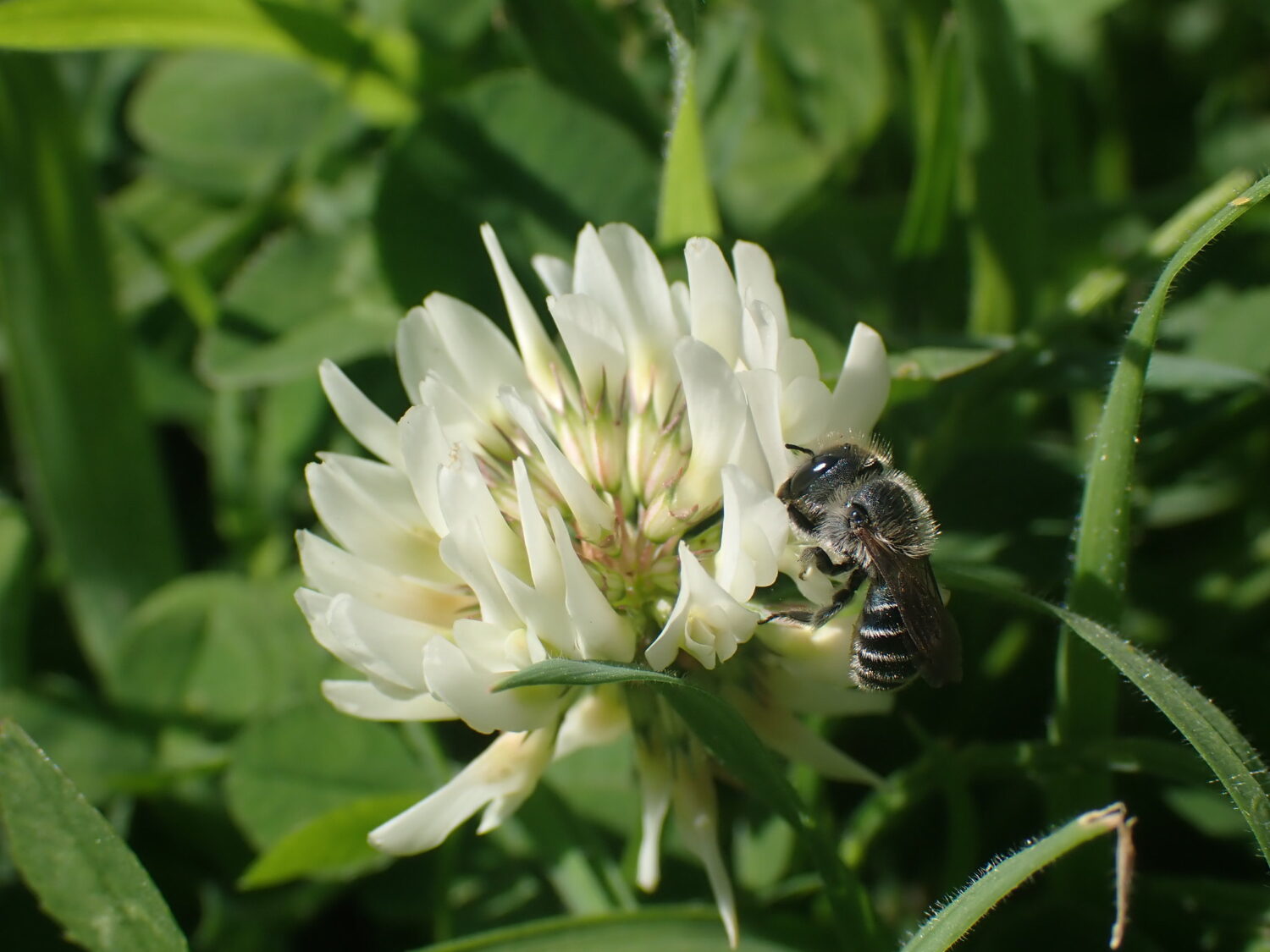
Blue Mason Bee Osmia caerulescens
The Blue Mason Bee is a smaller, slightly later emerging relative of the Red Mason, the female having a blue tinge to the black exoskeleton plus black scopal hair, while the male has golden hair with green eyes. Nests are provisioned in a similar way but sealed with chewed up leaf material.
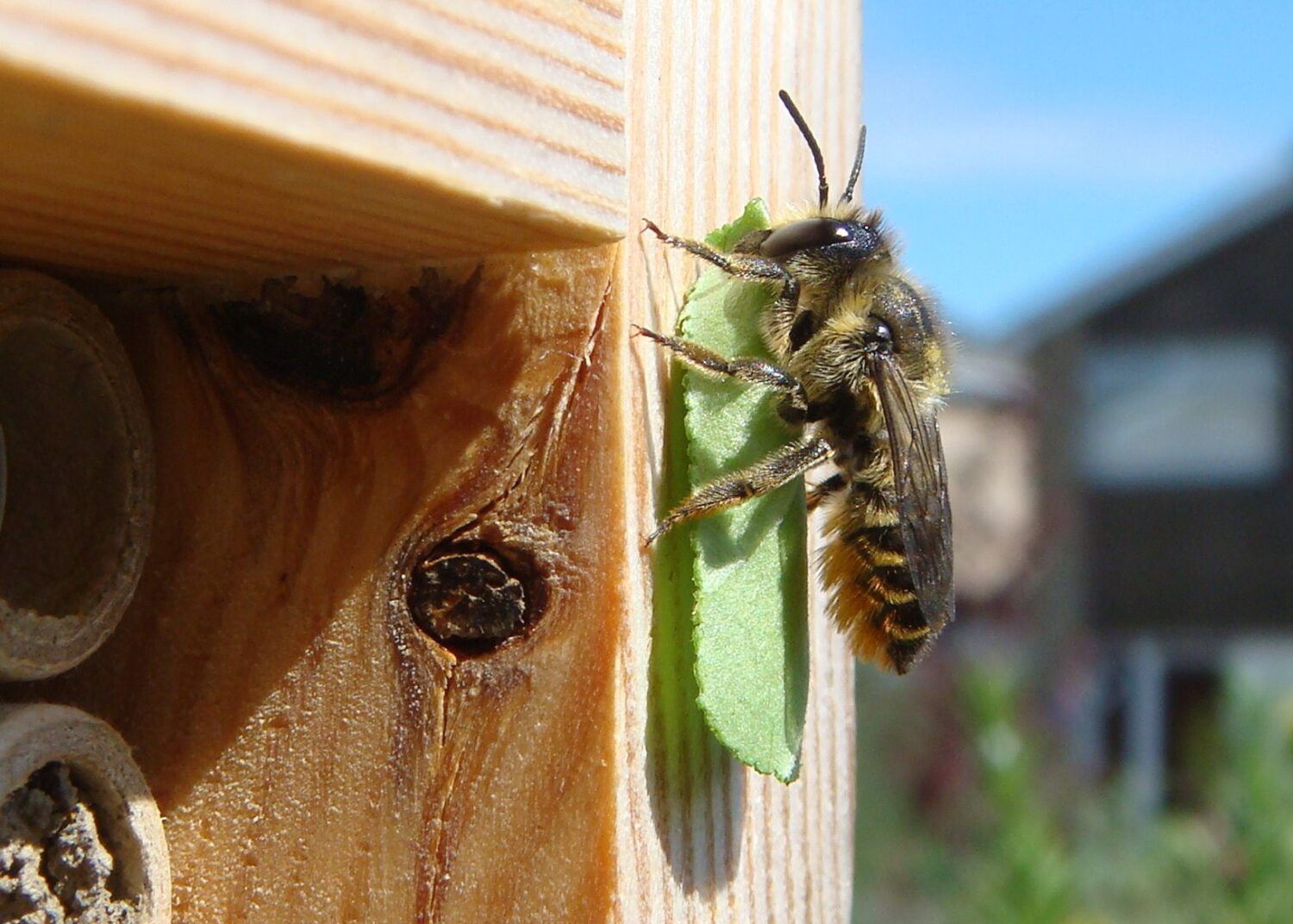
Leafcutter Bees Megachile species
Leafcutter Bees are often noticed because of the female’s habit of cutting neat sections out of leaves, especially of rose, to line and seal the nest. Of ten UK species, only three are likely to be spotted in the North East.
Wasps
Don’t think of the social wasps so many people love to hate, who spoil summer picnics. These are mainly black, and many are so small and thin they can be mistaken for flies. These species should be welcomed in the garden as predators of aphids, caterpillars and spiders.
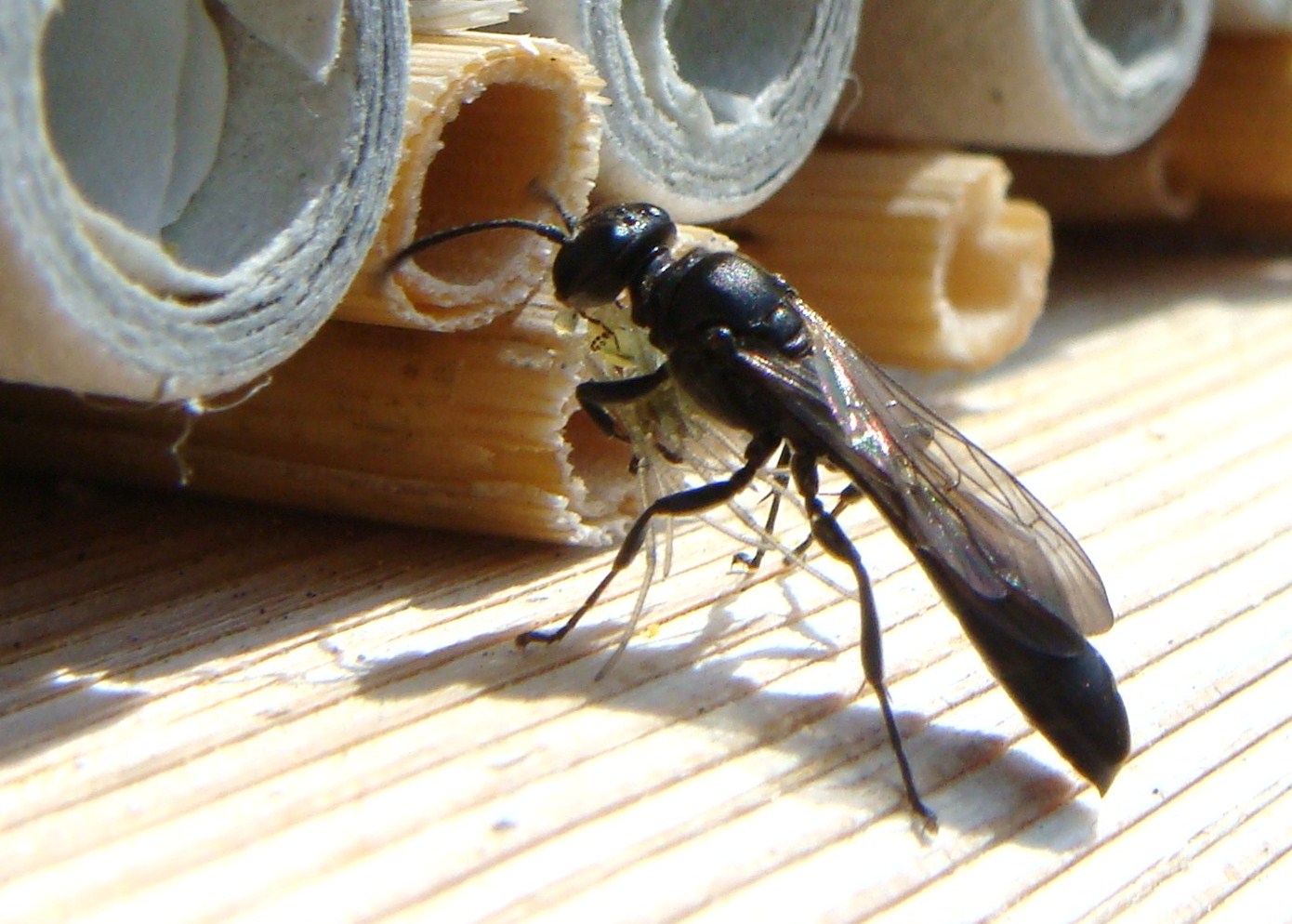
Slender Wood-borer Wasp Trypoxylon species
Two of these Wood-borer Wasps may be found in the NE. These are thin, all black wasps, 5-12mm long with elongated abdomen, that collect immature spiders to provision the nest. Cells are sealed with balls of mud carried between the female’s front legs.
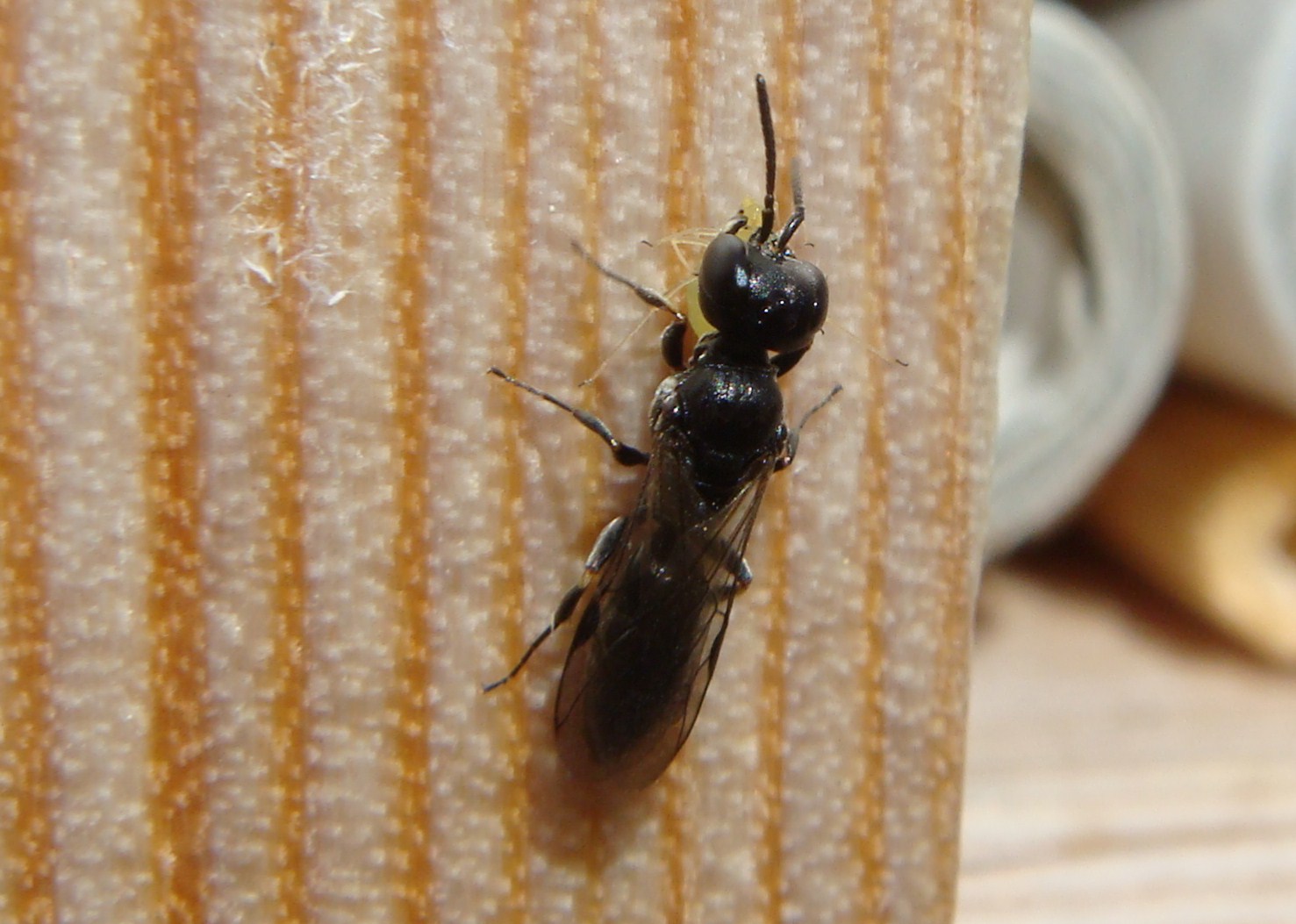
Passaloecus species
These are small, thin, black wasps that bring back large numbers of aphids to stock each cell. Of the eight UK species, three are possibly found in the North East. At three – five mm long they are very under recorded, as identification is not possible from photos. Nests are sealed with balls of resin and camouflaged with small bits of plant material, sand grains etc.
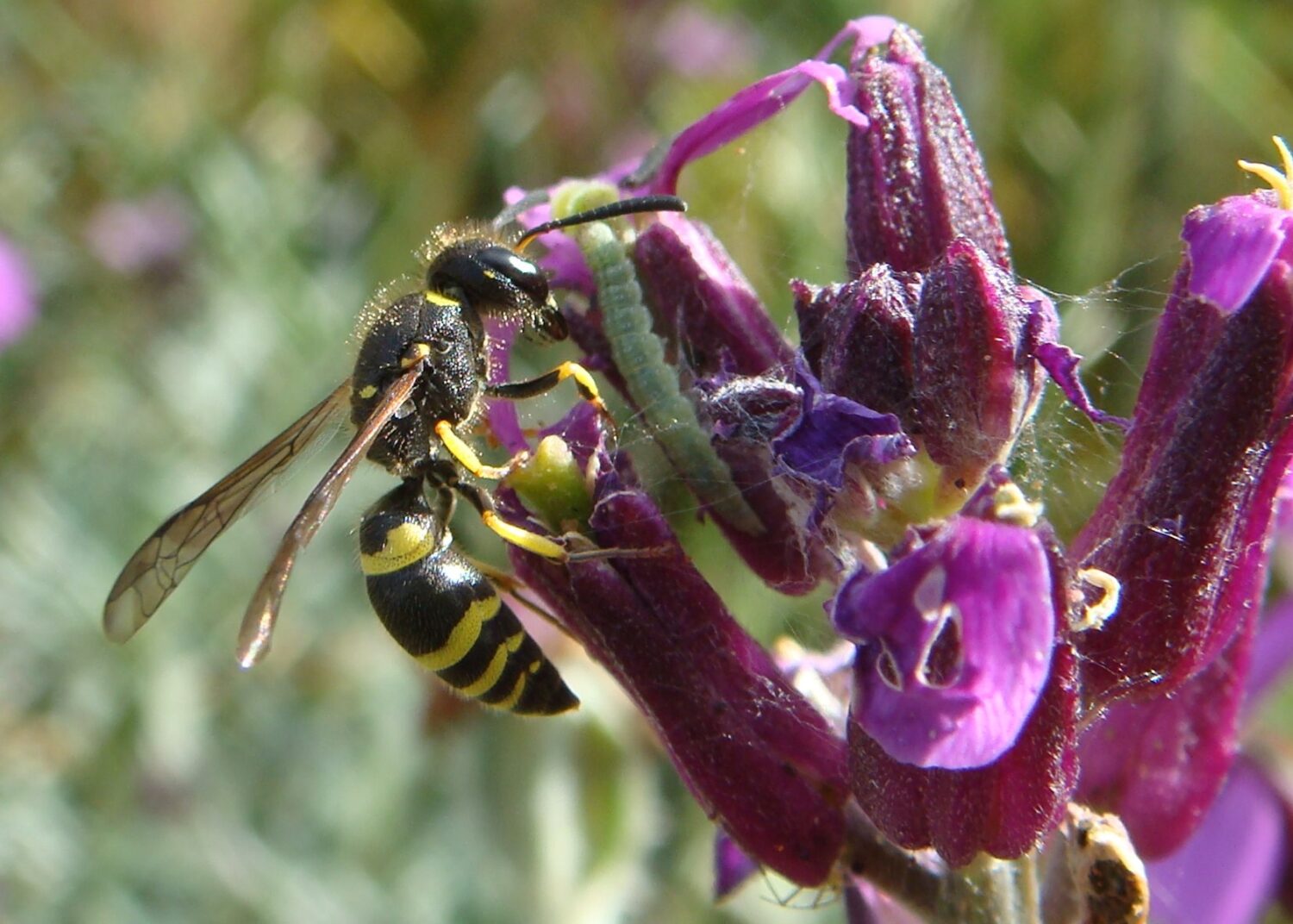
Ancistrocerus species
These are a group of mason wasps. Black and yellow striped hunters of moth, micromoth, and beetle larvae to provision the nest. Four species are possibly found in the NE, but are not identifiable from photos, and not always even from a specimen, so are under-recorded.
Cuckoo species
Then there are the species which lay their eggs in someone else’s nest cells, like a cuckoo, whose larvae eat the stores of food left by the host, and who may also eat or at least starve the host’s larva (cleptoparasites). But, of a nest of cells, only a few will be parasitised and, if the host species is rare, its specific parasites and cleptoparasites will be rarer and also in need of conservation.
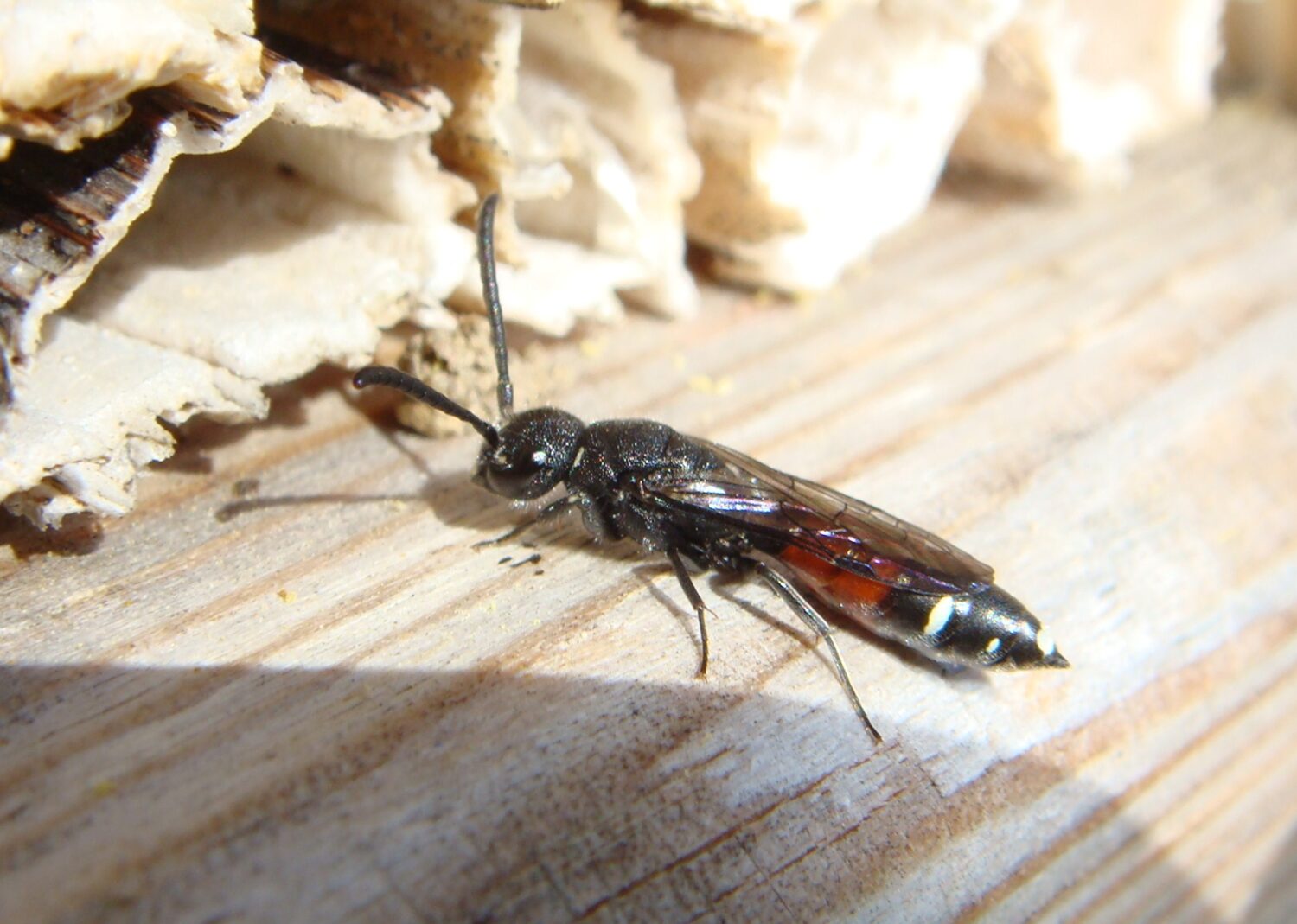
White-spotted Sapyga Sapyga quinquepuncata
This is a wasp at the north of its recorded range in South Northumberland. They prefer hot, sunny days, females often visiting for only a short time, popping an egg into a suitable nest, males checking to see if there are females about, and then disappearing. Their hosts are Mason bees.
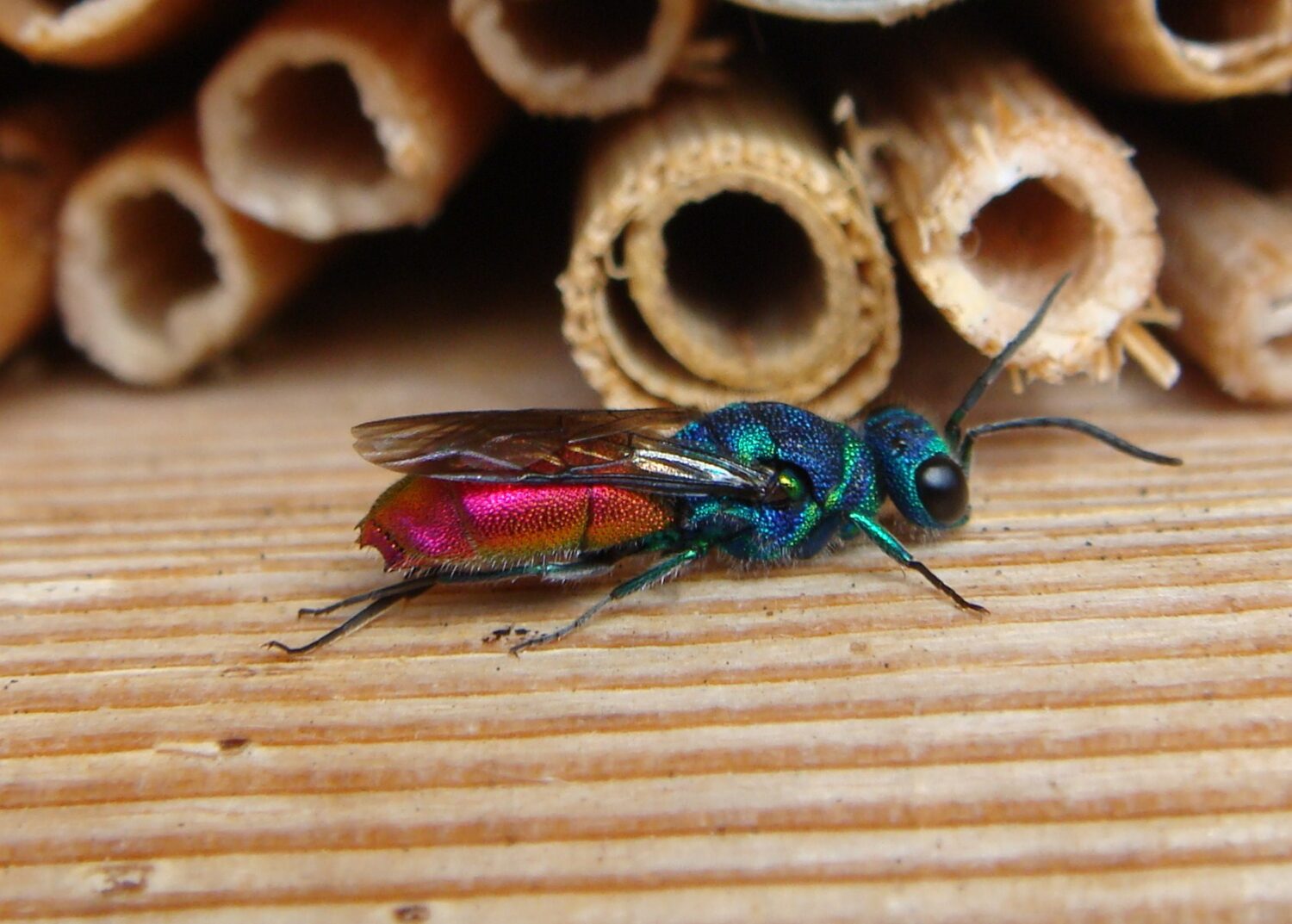
Jewel or Ruby-tailed Wasps Chrysididae species
These are small-medium wasps in metallic greens, blues and pinks that love to sit on walls or wood in the sun. They can be speedy movers, often too fast to catch on camera, but so beautiful they will take your breath away. They lay their eggs in the nests of solitary bees and wasps, and are under-recorded as difficult to identify.
By Louise Hislop, local entomologist
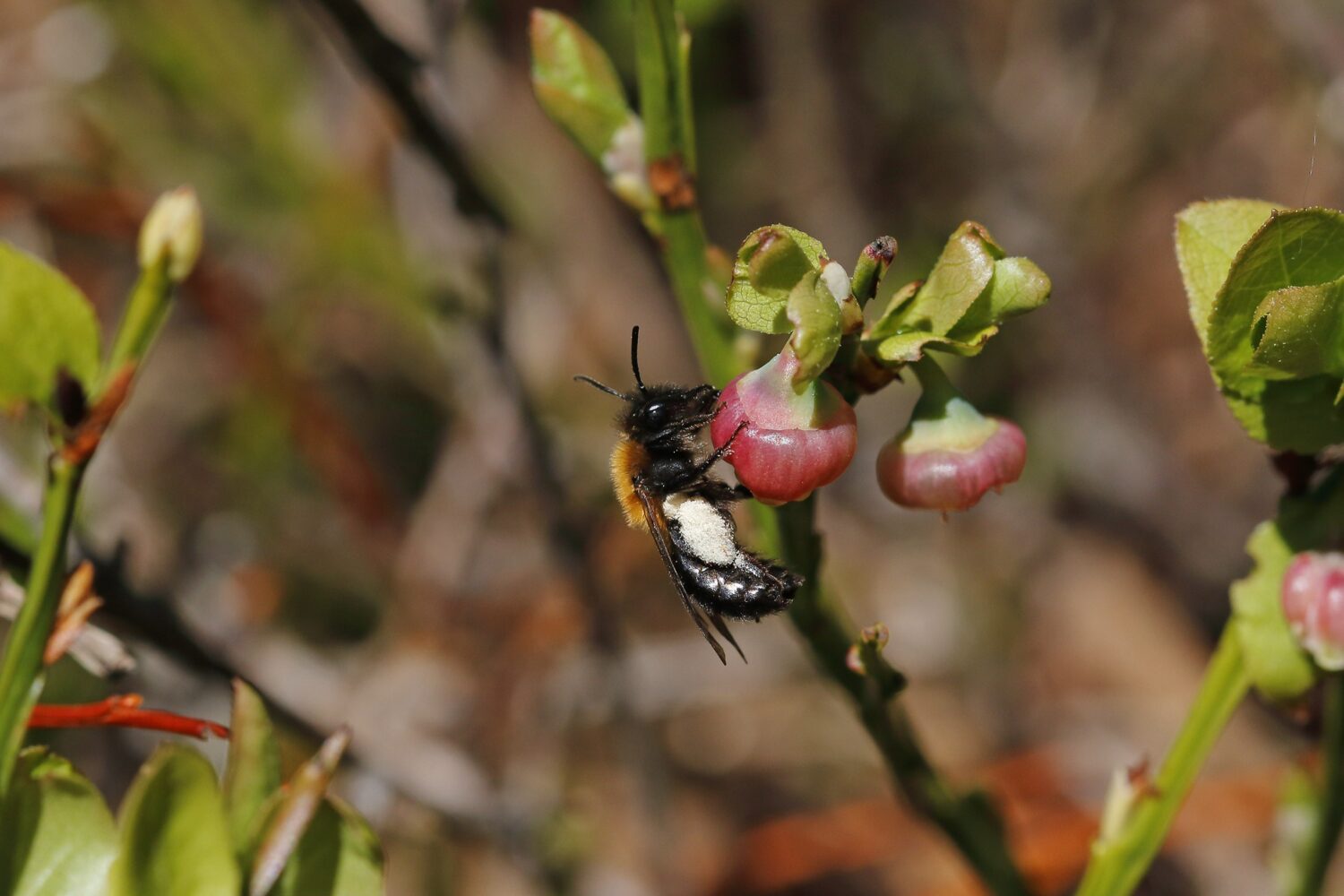
Join the North East Bee Hunt
Urban or rural, beginner or expert, we need your help to record eight distinctive bees across the North East this spring and summer.
Your records can add to our understanding of bees in the region and inform conservation and monitoring efforts.
Taking part is easy and every record counts, wherever you live in the region. Records of all bee species are encouraged.